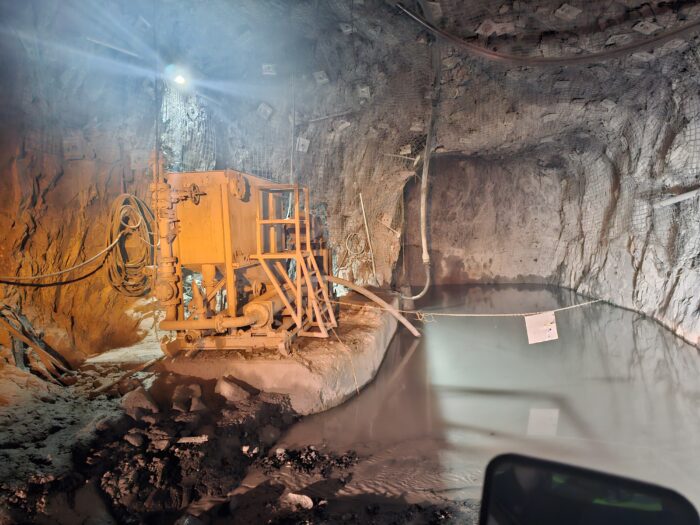(Wellpoint – WP)
The vacuum assisted pumping system – Wellpoint is made up of a set of filters driven into the ground – Wellpoint filters, generally installed around the perimeter of the excavation, connected to a collector by means of flexible hoses. This collector is in turn connected to the suction of a pump.
It is an efficient method for saturated granular soils with moderate permeability, such as sand or silty sand, of medium to low density and non-plastic behaviour. It is applicable to other types of soils with lower permeability (silt, clayey silt), although these soils require a specific assembly design and, in most cases, the execution of drills with a pre-filter and flow regulation at each collection point.
The pumped water flow can be high, despite the moderate or low permeability of the soil, because the capture is entrusted to a greater number of points (filters), compared to other classic deep pumping systems. In turn, this distributed pumping configuration causes hydraulic gradients of reduced values.
The maximum depth from which it is possible to suck water is essentially determined by the difference between the available atmospheric pressure (height above sea level) and the efficiency of the equipment in generating the maximum possible absolute vacuum. This limitation can be overcome by using different Wellpoint lines, installed at different levels or stages, as shown in the diagram.

Unique cases, for example, at altitudes above 4,000 meters above sea level, require a specific study, as well as machinery, devices and auxiliary equipment of maximum efficiency, paying special attention to the design characteristics.
Applications:
Applications of comprehensive control of groundwater and surface water in engineering works ( Dewatering ), using the Vacuum Assisted Pumping System ( WP )










